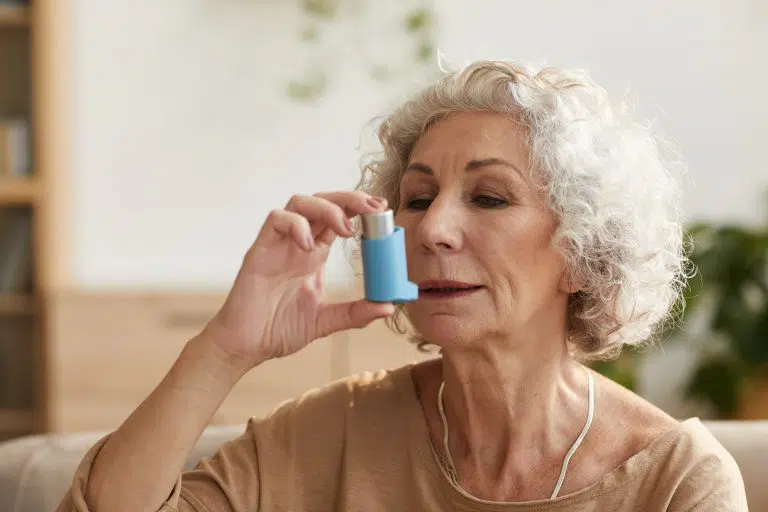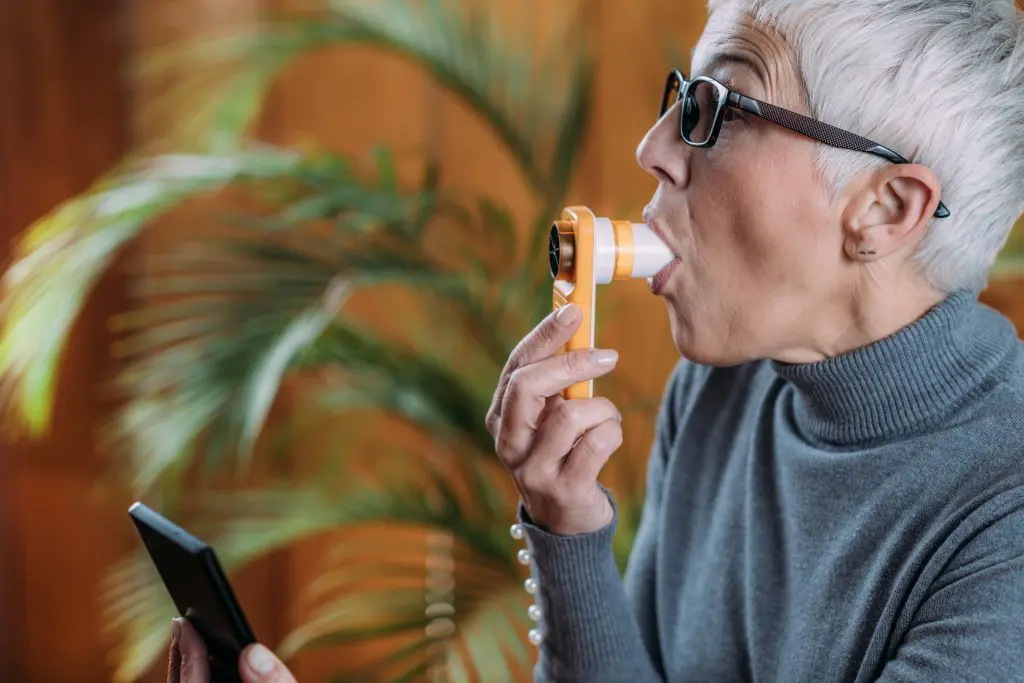COPD is a chronic condition of the lungs where there is airflow lImitation due to narrow or obstructed airways. Unlike in asthma the airflow limitation is progressive over time and not reversible. Emphysema and chronic bronchitis are the main forms of COPD.
In emphysema the air sacs (alveoli) are damaged reducing the surface area of the lung available for oxygen from the lungs to transfer to the bloodstream and carbon dioxide to transfer from the blood to the lungs.
In chronic bronchitis there is inflammation of the bronchi (airways) leading to narrowing of the bronchi and mucus production.
The most common cause of COPD is smoking. Inhalation of smoke from biomass fuel is also an important cause of COPD.

Symptoms of COPD generally progress slowly over time. The common symptoms include:
In some cases, symptoms can worsen rapidly and are usually due an exacerbation of the condition.
COPD is usually caused by the long-term exposure to inhaled smoke or chemicals. The most common cause is smoking (e.g. cigarettes, sisha, etc.) but can also occur from exposure to smoke from burning biomass fuel. Some people have a genetic predisposition to developing COPD (e.g. alpha-1 anti-trypsin deficiency).
The diagnosis of COPD is made from the clinical history, examination and lung function tests that demonstrate obstructive spirometry pattern.
Investigations that are often done include:


There is no cure for COPD but if the diagnosis is made early treatment can slow progression of the disease. The most important thing to do is to quit smoking if you smoke.
Aspects of treatment include:
Inhalers that contain bronchodilators and anti-inflammatory agents (e.g. corticosteroids) are used in the managment of COPD to releive breathlessness, wheeze and reduce the frequency of exacerbations.
During period of exacerbations of the disease oral corticosteroids (e.g. prednisolone) are often prescribed.
If it thought that exacerbations are caused by bacterial infections, antibiotics are often prescribed alongside corticosteroid treatment.
Airway clearance is important for patients that produce large volume of phlegm or have difficulty expectorating their phlegm.
Chest physiotherapy is also useful for breathing pattern re-education.
Chest physiotherapists also run pulmonary rehabilitation programmes that are useful for the management of breathlessness in COPD patients. More information on pulmonary rehabilitation can be found here.
In some instances when patients with COPD are colonised with specific bacteria in their lungs and they having recurrent chest infections despite optimal control of the COPD then prophylactic antibiotics may be indicated.
It is recommended that patients with COPD receive the annual influenza (Flu) vaccination and the pneumococcal polysaccharide vaccine (PPV23) if they have low total pneumococcal or specific pneumococcal serotype antibody levels.
Some patients with COPD may need ambulatory oxygen to help them carry out their daily activities or exercise. When the condition progresses long-term oxygen treatment may also be needed to reduce the strain that low oxygen levels can have on the heart.
Smoking cessation is very important. For more information speak to Dr Jose or click here
Respiratory Medicine
Royal Brompton Hospital
Sydney Street
Chelsea
SW3 6NP